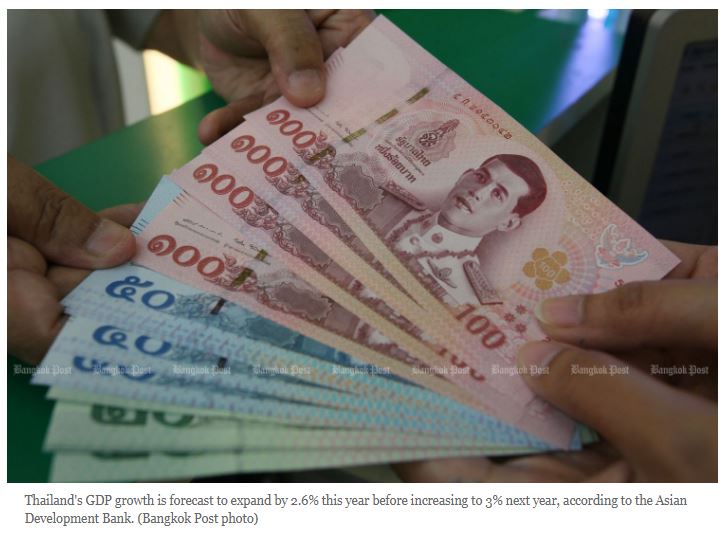ADB revamps Asian growth for 2019-20
The Asian Development Bank (ADB) has trimmed its forecasts for economic growth in developing Asia this year and next year as growth in China and India is weighed down by both external and domestic factors.
In a supplement to its Asian Development Outlook 2019 Update released in September, ADB now expects GDP in the region to expand 5.2% in both 2019 and 2020, down from the September forecast of 5.4% growth this year and 5.5% next year.
“While growth rates are still solid in developing Asia, persistent trade tensions have taken a toll on the region and are still the biggest risk to the longer-term economic outlook. Domestic investment is also weakening in many countries, as business sentiment has declined,” said ADB chief economist Yasuyuki Sawada.
“Inflation, on the other hand, is ticking up on the back of higher food prices, as African swine fever has raised pork prices significantly.”
The supplement forecasts inflation of 2.8% in 2019 and 3.1% in 2020, up from the outlook of 2.7% this year and next.
In East Asia, China’s growth is now expected at 6.1% this year and 5.8% next year thanks to trade tensions and a slowdown in global activity coupled with weaker domestic demand, with family wallets being hit by pork prices that have doubled relative to a year ago.
Growth could accelerate, however, should the US and China come to an agreement on trade, the report said.
Hong Kong, already in a technical recession, will see severe downward pressures persist, possibly into 2020. The economy is expected to contract 1.2% this year and grow 0.3% next year.
For Thailand, the economy expanded by only 2.5% year-on-year during the first nine months of 2019 as growth moderated for private consumption and public consumption and investment, according to the Manila-based lender.
Weaker trade weighed on economic growth, with exports down for both agriculture and manufacturing sectors. Weaker domestic demand also dragged down imports.
Thailand’s GDP growth is forecast to expand by 2.6% this year before increasing to 3% in 2020. The latest growth forecasts are a downgrade from 3% and 3.2% projected previously.
Finance Minister Uttama Savanayana said Thailand’s economy is not entering a recession and next year’s GDP growth is projected to be more than 3%.
The government stands ready to implement additional stimulus measures in 2020 if necessary, while state-owned enterprises have accelerated their budget disbursements worth a combined 100 billion baht this quarter, said Mr Uttama.
The global economic outlook is not anticipated to fall into a recession because the US employment rate still remains healthy, said Krungthai Bank president Payong Srivanich. Sluggish global economic growth, however, will continue to affect domestic tourism and exports, with the latter expected to record a contraction in 2020, said Mr Payong.
In South Asia, India’s growth is expected to slow to 5.1% in fiscal 2019 as the foundering of a major non-banking financial company in 2018 led to higher risk aversion in the financial sector and a credit crunch. Consumption was affected by slow job growth and rural distress aggravated by a poor harvest.
Growth should pick up to 6.5% in fiscal 2020 with supportive policies. In September, the ADB forecast India’s GDP to grow 6.5% in 2019 and 7.2% in 2020.
GDP growth is expected to slow in the Pacific with activity in Fiji expected to be more subdued than previously anticipated.
Central Asia is the only sub-region where prospects look a little brighter now than in September, largely thanks to increased public spending in Kazakhstan, the region’s largest economy.
Central Asia is forecast to grow 4.6% in 2019, up from the previous prediction of 4.4%. The forecast for 2020 is for growth of 4.5%.
Source: https://www.bangkokpost.com/business/1814104/adb-revamps-asian-growth-for-2019-20


 English
English





